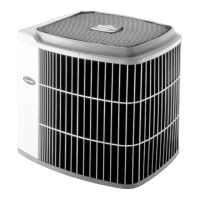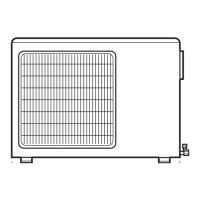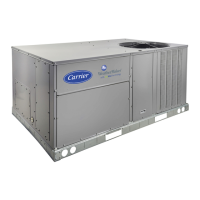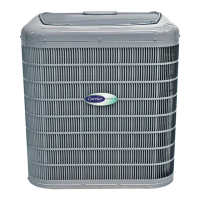
Do you have a question about the Carrier PULSOR Series and is the answer not in the manual?
| Brand | Carrier |
|---|---|
| Model | PULSOR Series |
| Category | Air Conditioner |
| Language | English |
The official driver's manual for the Carrier Transicold PULSOR® Series refrigeration unit.
Key safety instructions including electrical handling, high voltage, component risks, and operational hazards.
Details the unit's nameplate for identification, including model and serial numbers.
Indicates the unit's maximum sound power level (LWA) as per a sticker on the unit.
Details the layout and functions of the multi-temperature cab command interface.
Explains the unit's power sources: 'Road' mode (generator) and 'Standby' mode (mains).
Covers controlled temperature, defrost operations, and specific requirements for eutectic units.
Instructions for starting the unit in 'Road' mode (vehicle ignition) and 'Standby' mode (mains connection).
Procedure for stopping the unit in 'Road' and 'Standby' modes, including compartment shutdown.
Steps to adjust the setpoint temperature, noting changes require confirmation to be saved.
How to manually initiate a defrost cycle, with notes on unit types and temperature conditions.
Guide to modifying defrost parameters like interval and coefficient using the control panel.
Instructions for manually defrosting eutectic plates, emphasizing caution and natural defrosting.
Procedure to access and view various unit data, including alarms, operating hours, and software versions.
Guide to setting user functions such as setpoint thresholds and evaporator fan operation.
Procedure to access the unit's active and inactive alarm lists.
Detailed list of alarm codes, descriptions, severity, and recommended actions for malfunctions.
Explains the importance of a maintenance program for reliability, cost control, and performance.
Guidance on keeping warning pictograms clean, undamaged, and correctly replaced.
Provides a schedule for regular maintenance services based on operating hours or mileage.
Recommendations for pre-loading procedures: defrosting, cleaning, and using strip curtains.
Advice on loading practices: maintaining correct temperature, separating goods, and ensuring airflow.
Guidelines for post-loading: shutting down the unit, keeping doors closed, parking, and storage.











